After Huis Ten Bosch we take the drive back to Fukuoka. I’m sad that I missed seeing the famous Shiroyone Senmaida Rice Terraces north of Kanazawa, an area rich in rice terraces. So I researched and found out that Fukuoka is famous for rice terraces too. So today we plan to visit the famous Oura Rice Terraces and Terraced Rice Fields of Hamanoura.
They’re on the top 100 rice terrace list in Japan!
These rice terraces are semi on the way, with a 1 hour detour. Turns out it is a great decision to add the detour for another reason and I’ll explain why.
It’s a rainy day but that’s actually ok for visiting rice terraces. On a rainy day there is no one in the parking lot so we get to park at parking lot #1, the closest one. Luckily it’s not pouring rain, only sprinkling rain. That means we get breaks in the rain that reveal beautiful, wispy clouds hugging the green scenery. I also managed to borrow some clear umbrellas from the Toyota Rent a car. Everyone has a clear umbrella in Japan. And it makes a lot of sense when it rains so much.

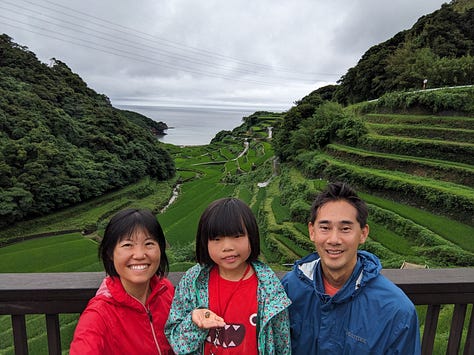
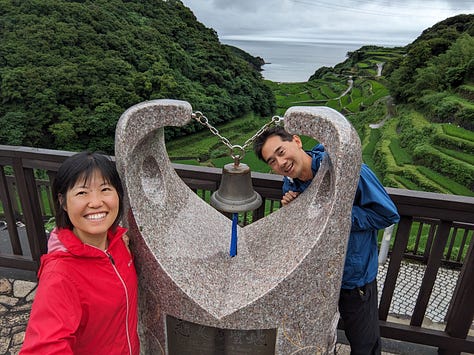
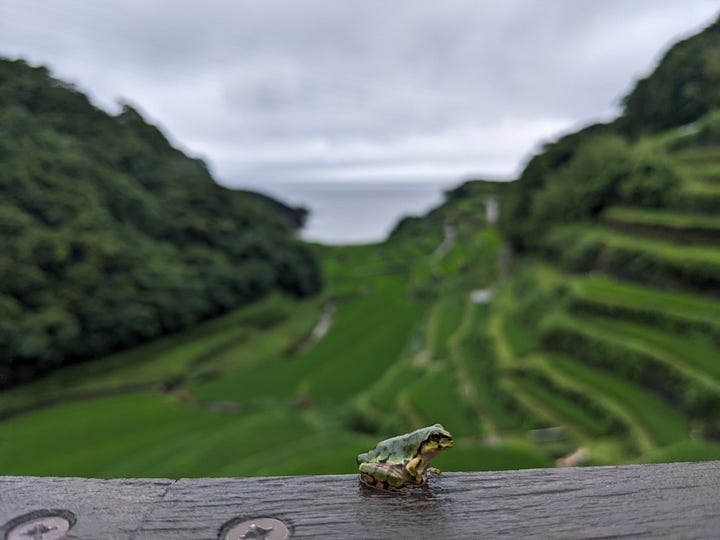
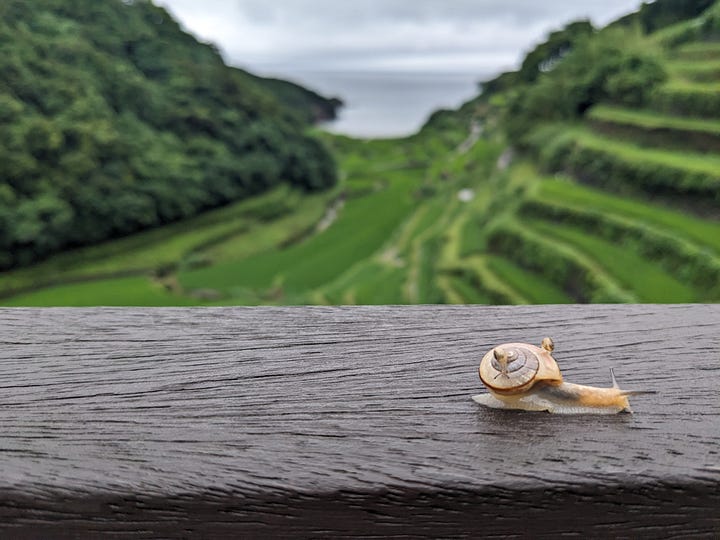
Remember I said I’ll explain why the detour is great in addition to the great views?
In Japan highway tolls are very expensive. Driving 1 hour can cost $20. But the older roads are toll free. These include all the most beautiful drives through the countryside and through the mountains, often with super long tunnels too. They’re free because they’re part of the old infrastructure, and the newer, straighter highways have tolls. So by detouring we not only enjoy great views, but also avoid heavy tolls. We discovered this a few windy roads back, it’s like getting paid to go enjoy some great views, so we do!
Arriving in Fukuoka, Daimyo District
We arrive in our new apartment in Fukuoka, right in the heart of the Daimyo district. It is the heart of restaurant life and activity, and we live just above the Nene Chicken so we enjoy the scent of Korean fried chicken every time we come home. Since we’re in Japan we choose not to eat that, instead we venture farther out and find wonderful eats like tomato ramen, 290 yen ($2) Hakata tonkotsu ramen, rice-based churros shaped like a cat, and lime udon.

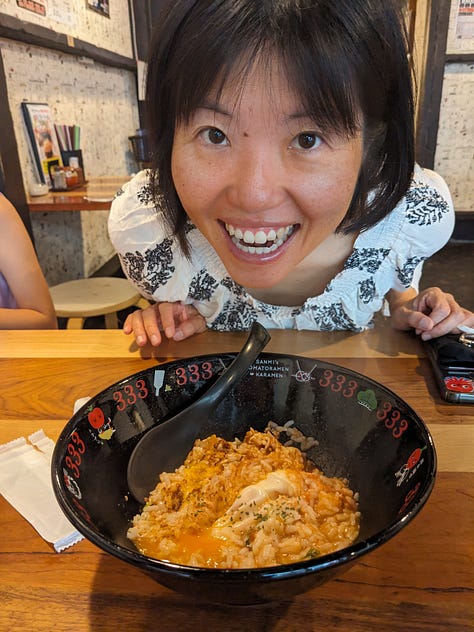
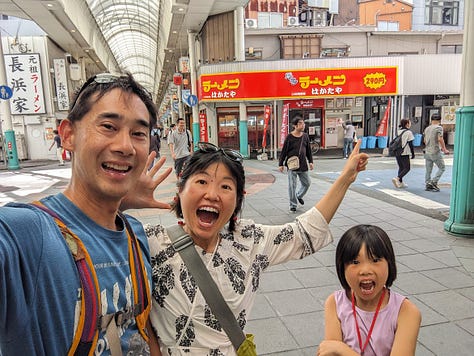

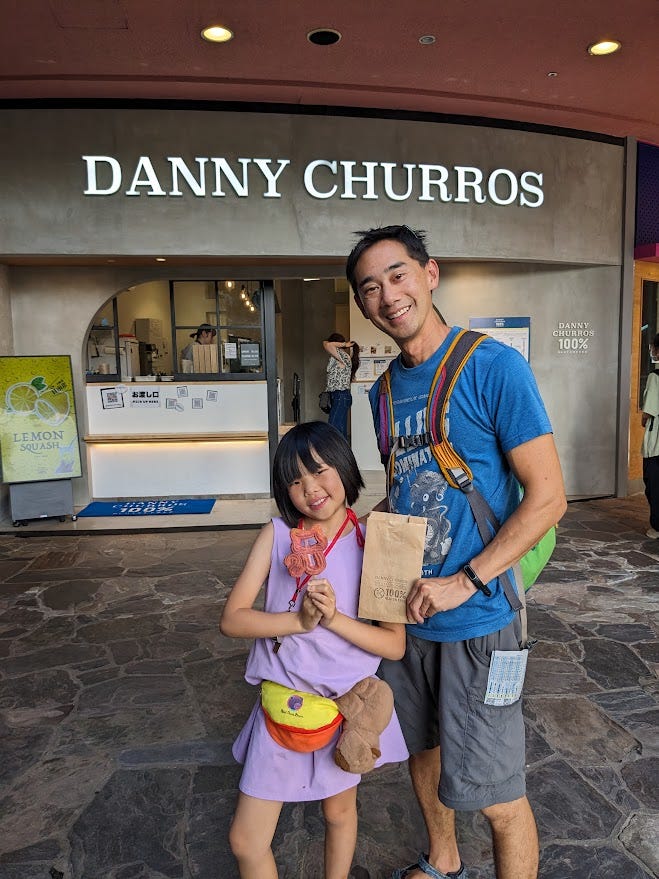
The ceiling lamp in our apartment is unusually large, Papa Bear discovers that it is actually a projector also!! So we use it as a night light, watching fish videos on the wall.
Hakata Gion Yamakasa
The next day we venture out to explore the city. Each year in mid-July the city comes alive with a festival called the Hakata Gion Yamakasa. Hakata is originally a separate town and an important port for trade and cultural exchange. During the Edo period, Fukuoka and Hakata were two distinct towns, separated by the Naka River. Fukuoka was a castle town of the samurai, while Hakata was a bustling merchant town. In 1889, the towns of Fukuoka and Hakata merged to form what is now known as Fukuoka City. However, the name Hakata has persisted, and now we see Hakata on everything cultural such as foods and festivals.
We are two weeks too early for the Hakata Gion Yamakasa event on July 15th. That’s the day that 30 or so men carry a heavy shrine on their backs and race other teams of 30 men carrying heavy shrines called "Kakiyama” that can weigh up to 1 ton (approximately 2,000 pounds). Meanwhile 50 other men run with the shrine-carrying men. Everyone is in team uniforms. It’s quite a sight to see. This traditional festival in Fukuoka boasts a history of over 770 years. It is a symbol of early summer in the local community, with the saying that summer arrives once the Yamakasa ends. This year, 2024, marks the 783rd celebration.
We are sad that we miss the actual festival, but luckily we are close enough that the shrines are put up around the city in preparation. It’s a serious event, so an organizer has already put up a Gion Hakata 2024 Google Map. How convenient for our scavenger hunt for shrines!
Most shrines are walkable from our apartment, and we find them in air conditioned fancy shopping malls, at street corners, and in the middle of covered but not air conditioned malls. All of them have 6-10 seats on both ends of the shrine so you can sit down and marvel at them. Sometimes a cluster of men in yukatas, their festival uniforms, would stand around their shrine welcoming visitors. We find a media company sponsored shrine that looks a bit Christmas themed, because the shrine has representation of all their programs including their Christmas special. All the shrines have a front side, which usually shows a horse and fierce looking warriors, and a backside, which shows a calmer collage of characters.


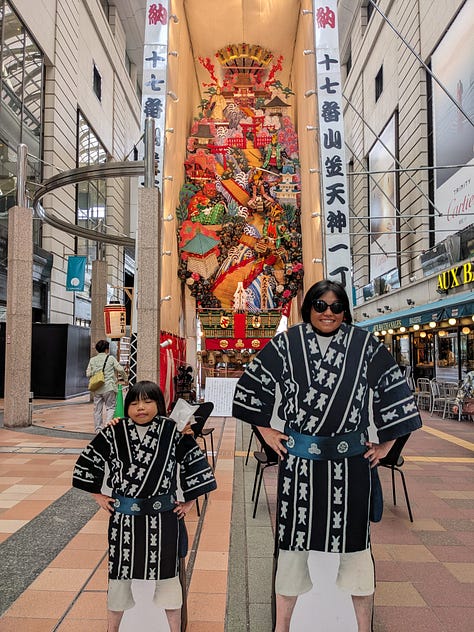

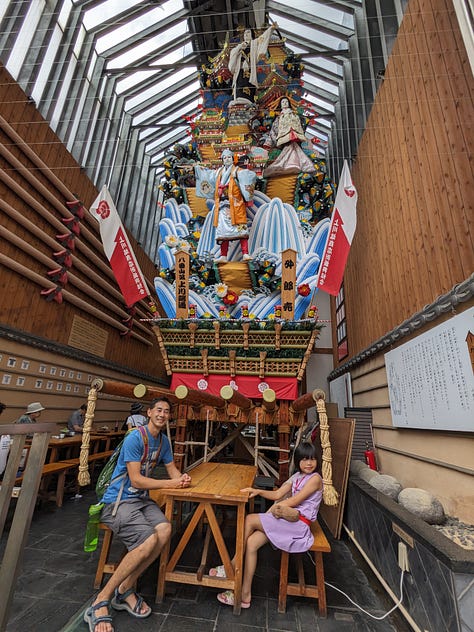

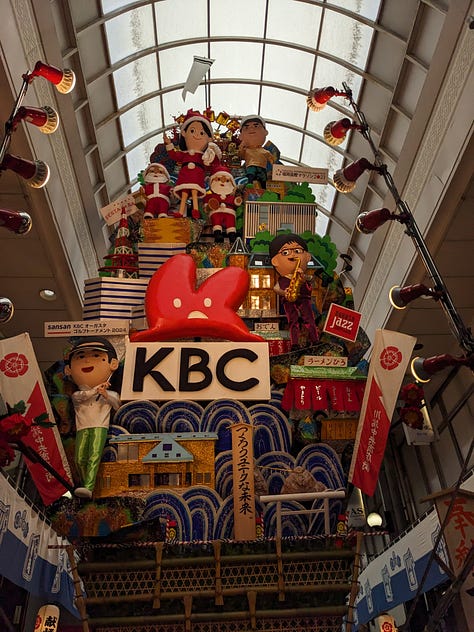
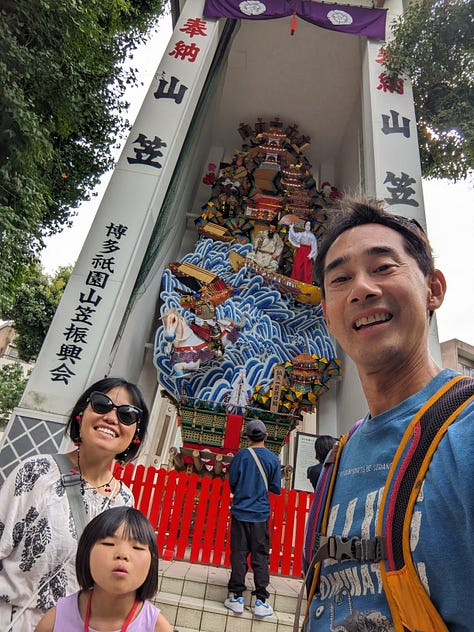

The Sewage Museum
Scavenger-hunting the shrines take us all over the city, and we run into the Sewage Museum by chance. I love the well designed and colorful manhole covers all over Japan and I’ve been collecting them in photos. Future post on manhole covers coming. So I’m extra excited to visit a museum by the people who bring us the beautiful manhole covers, the people of sewage works. The display tells us the proud fact that while New York City pipes have a 12% leakage rate the Fukuoka pipe system has only a 2% leakage rate. They have machines that go inside their pipes and paint / glue a layer inside the pipes, fixing many leaks.
We also find a manhole cover sample, and learn that the design tells a trained eye whether it’s drain water going straight to the sea (squares on the rim), or mixed water going to the filtration plant (dots on the rim).
The Art Museum
Next, we run into the Asian Art museum. Museums here are very cheap to enter, usually between $2 and $8 and kids are free. Japan really values giving their population access to education including museums. There are some interesting displays, including an exhibit of 1930s Shanghai posters which I like. And a portrait of communist Vladimir Lenin portrayed in a KFC logo.
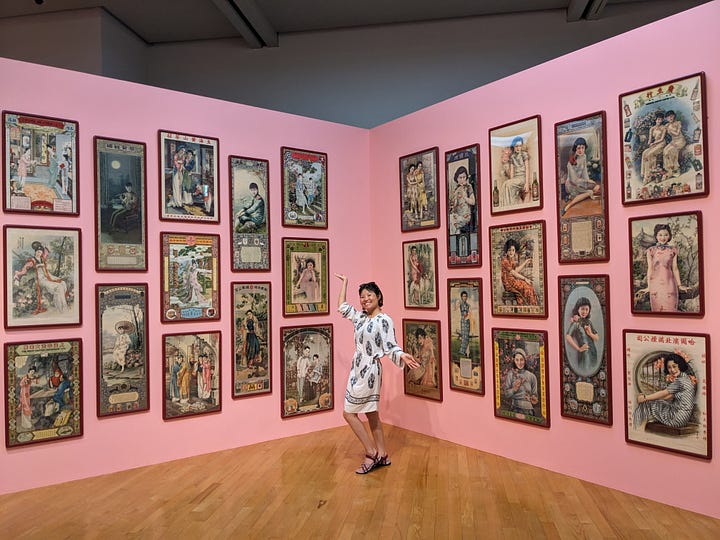
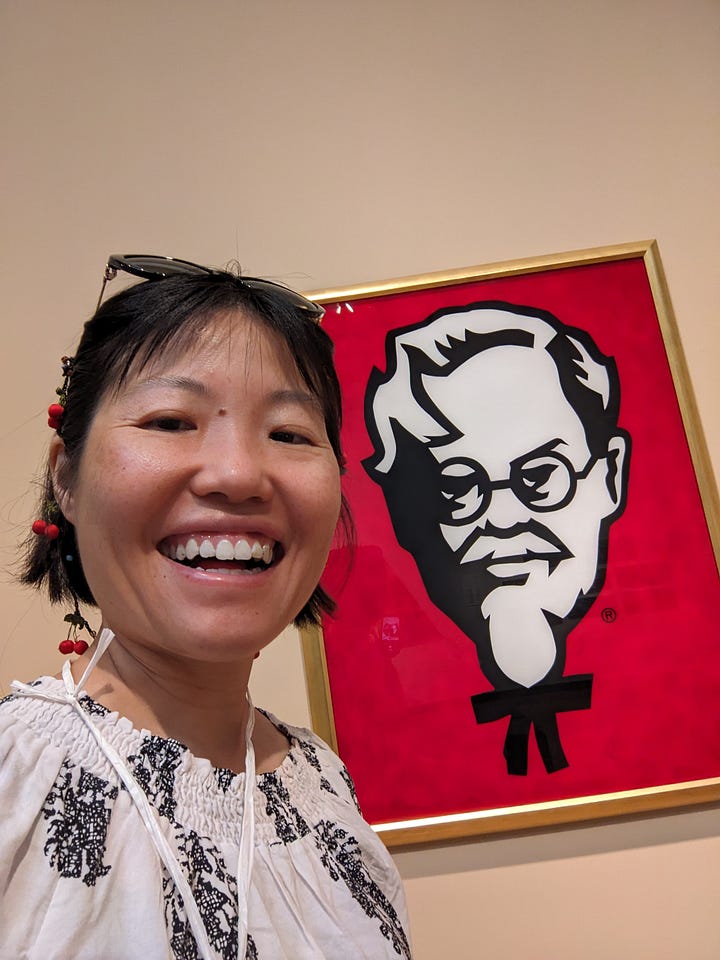
The best display though, which was free and in the lobby, is 2 minutes on VR goggles where you can experience sitting on the Hakata Gion shrine during the festival! Usually 3 men sit on those shrines while 30 men carry it around in a race. With the VR goggles on, we all get to sit on the shrine too during a race!
The Canal City Hakata
It’s now July and very hot, so the best way to spend time in a city is in an air conditioned mall. We got to the mall called Canal City Hakata, and we take pictures with all the cute things in the mall.
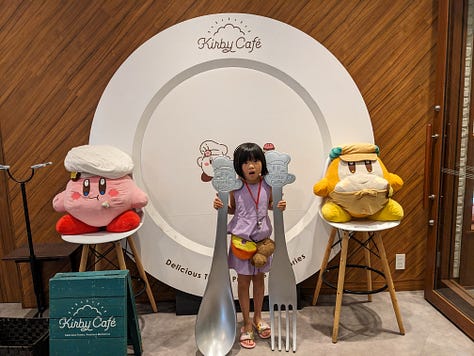
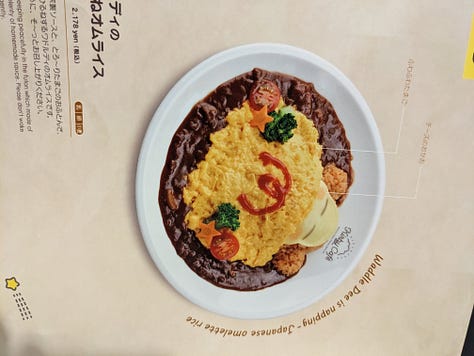
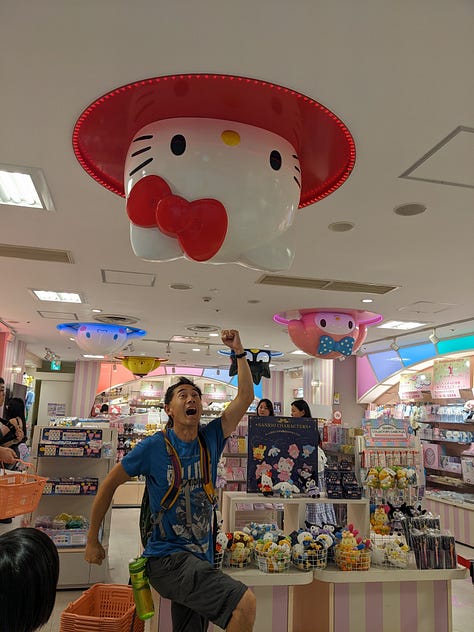
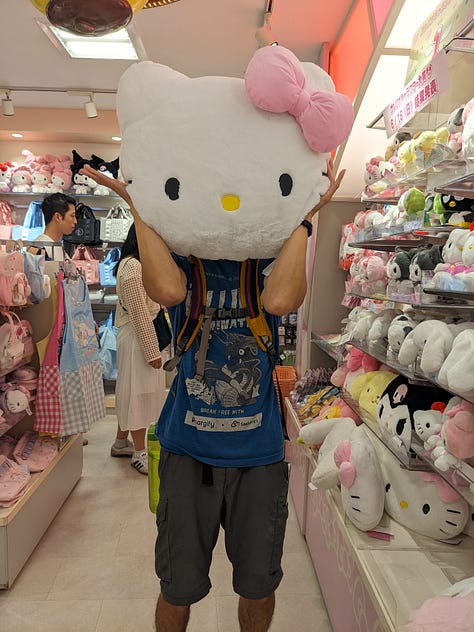
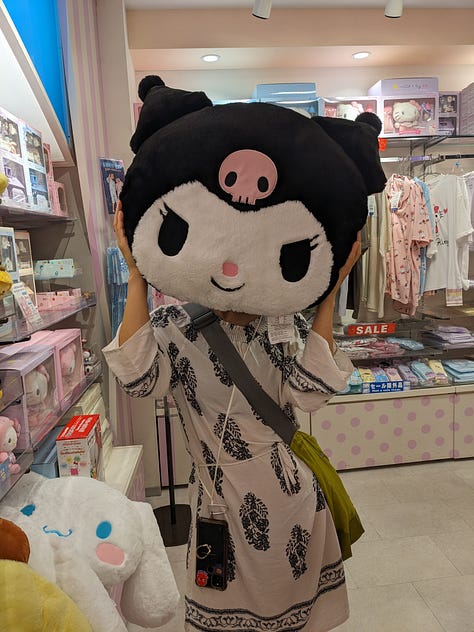
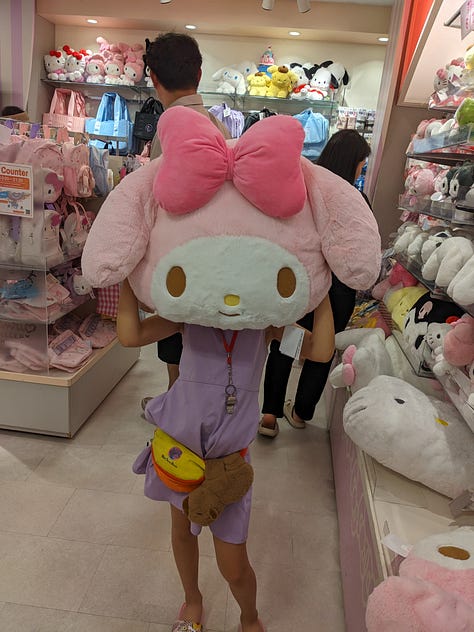
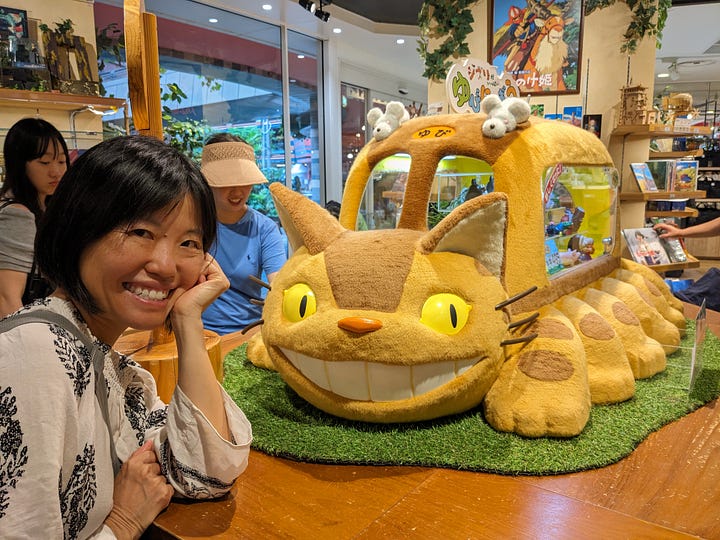
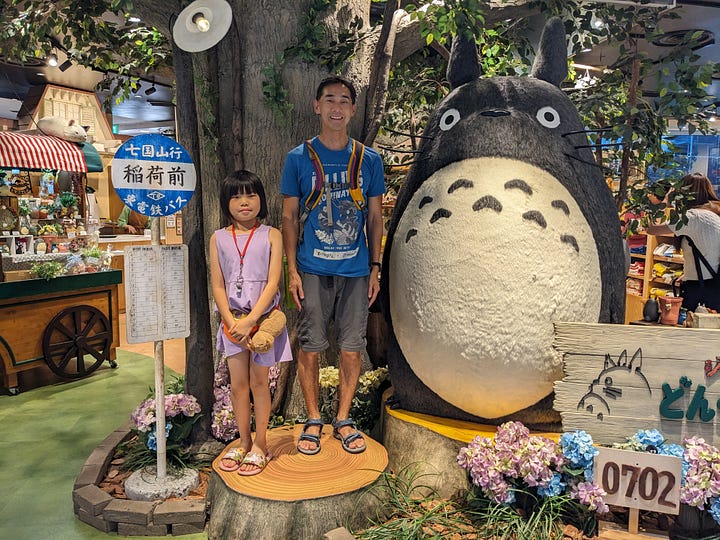
Then discover that they have a fountain show. It’s a mall fountain show, and we just watched the amazing Hui Ten Bosch one. But why not, it’s on in a few minutes.
Turns out, it’s spectacular!! Front row seats mean we are literally in the splash zone. The water goes up 2-3 stories high, they end the show with a big bang, literally. It’s really fun to watch.
Japan is awesome, sometimes
There are some great things about Japan, like the self check-in. We use self check-in at many hotels. But we didn’t expect this apartment to have it as well. This apartment gave us a QR code we scan with the tablets in the lobby, then it shows our room number and password. There are always self-serve puzzles to figure out and it feels like a digital escape room a lot, which is fun if you’re not in a hurry.
Japan likes to decorate their sidewalks. In addition to the awesome manholes, I also find random fun “stickers” on the ground as well.
Our favorite is probably all the plastic food models. Makes it easy to know the food options without speaking Japanese. It is very exciting to find this restaurant that has tiny food models as well.
Japan has water machines that spit out both water and ice at the same time. Efficient!
But Japan has short hours for everything, including trash cans. This trash can at the convenience store is closed from 8am to 6pm.
We get 3 nights in Fukuoka, so adventures continue tomorrow!










